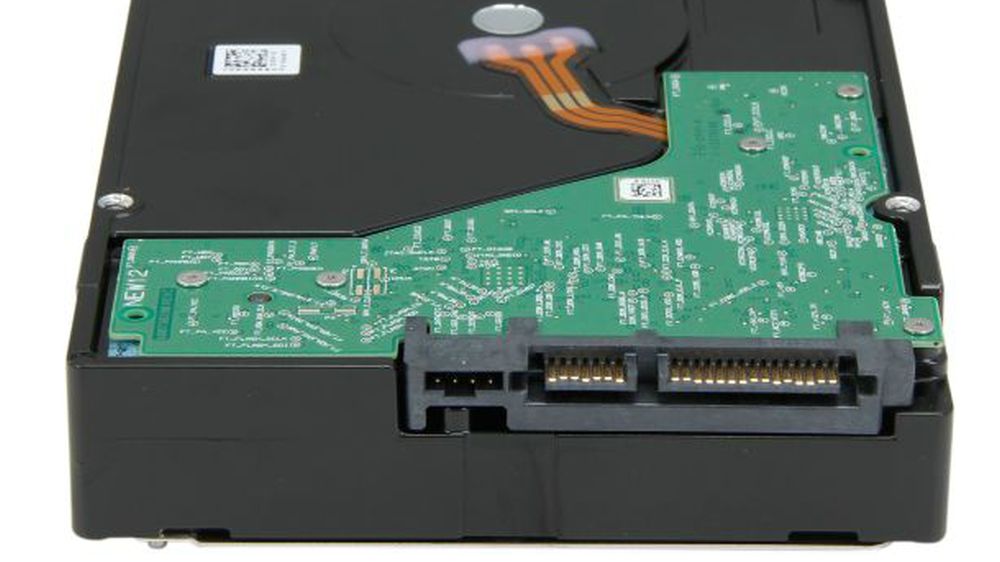SDN and HAMR are key to Seagate's near future
Could alternative form factors be the key to storage shortage?

"Watch this space", Joe Fagan, Senior Director Cloud Initiatives, EMEA at Seagate, told me when I queried him regarding the drive for a new hard disk form factor in the hyperscale market that continues to demand more capacity.
The likes of Google, Facebook and Amazon were the driving force behind the widespread adoption of Open Stack and Open Compute across the enterprise server industry and there are hints that the same guys may be shaping the storage segment of that industry.
Blame the data capacity gap highlighted by Seagate's own VP for that; Mark Whitby told us that the world would be running out of storage within two years simply because hard drive manufacturers can't churn out hard drives fast enough while consumption is following a hockey-stick trend. And that's not even accounting for the looming explosion in data production thanks to the IoT.
Facebook, Google have changed the game
So what would that new form factor be? "Hyperscale customers are the ones giving momentum in the search for larger capacity disk drives, perhaps sacrificing performance on the way," said Fagan. Does that mean a return to 5.25-inch? The abandoned format was popular back in the 90s before falling out of favour as 3.5-inch became more popular.
"It's all about the storage capacity per unit volume", Fagan added. At the Hyperscale end of the market, speed is an important but not the main factor and it is likely that the players would settle for low-speed spinning hard disk drives that would probably consume less power but also emit less vibration and be less prone to failure.
Other than a form factor shift, other ways of dramatically increasing storage density are being explored. SMR, commonly known as Shingles, provides a 40% improvement in capacity but because it takes a hit on random writes, is better suited for infrequently changed content like bulk object storage, backup targets and archiving. "You don't do random writes on tapes, do you", joked Fagan. The man has a point.
He noted that HGST's use of helium in hard disk drives is "expensive", partly because it's a one-off small advantage, traded for a lot of complexity, uncertainty and cost. The technology, Helioseal, allowed HGST to hit the 10TB capacity because it can cram up to seven platters rather than the industry standard of five.
Sign up to the TechRadar Pro newsletter to get all the top news, opinion, features and guidance your business needs to succeed!
Where is storage going?
HAMR (heat assisted magnetic recording) is where the future lies, and continues to get better and better, according to Fagan. While hard drives currently hit one terabit per square inch, HAMR can potentially help vendors hit 50 terabit per square inch. Seagate has invested significantly in HAMR development and is planning to release its first HAMR drive in 2016, with Fagan saying the capacity trajectory is for "20TB by 2020".
The future of storage not only lies in cramming more bits but also down to the very nature of storage devices. Technologies like Seagate's own object storage project, Kinetic, are changing the way data is accessed and the arrival of flash storage allowed hybrid solutions to evolve.
"We see great value in solid state hybrid drives, and have shipped over 10 Million units already", Fagan said. "Our focus is on tweaking how multiple caches interact with each other and this will really accelerate enterprise performance".
As for the future of the humble hard drive, Fagan had a twinkle in his eyes. "We can bring more processing power on the hard drive" when asked whether adding more features (real time encryption, inline deduplication, real-time compression) to the HDD would make sense. How meaningful would that be? "That would need to be done in relationship with the wider industry."
He ended our conversation by saying "Now is an inflexion point. For the future, we subscribe to [the concept of] software defined storage."

Désiré has been musing and writing about technology during a career spanning four decades. He dabbled in website builders and web hosting when DHTML and frames were in vogue and started narrating about the impact of technology on society just before the start of the Y2K hysteria at the turn of the last millennium.